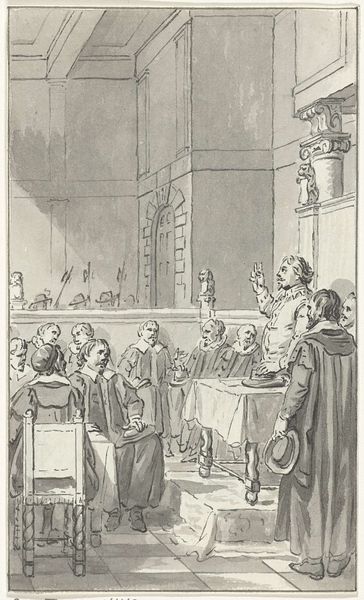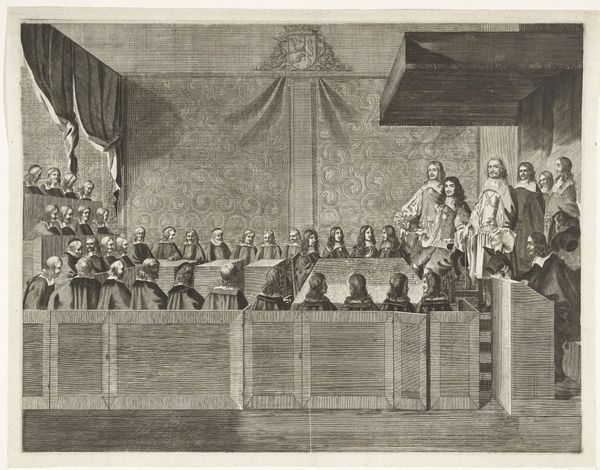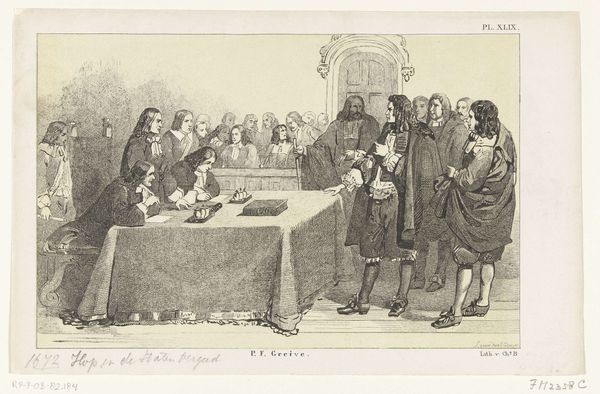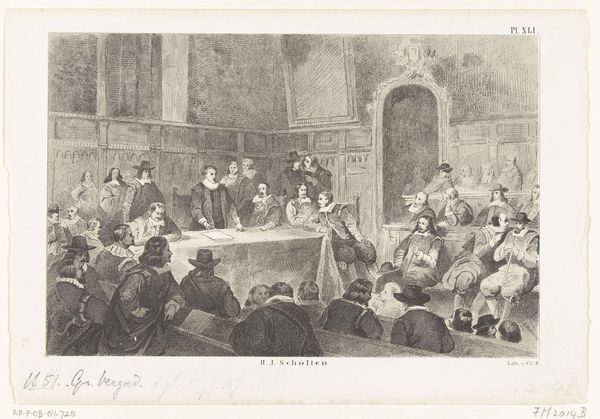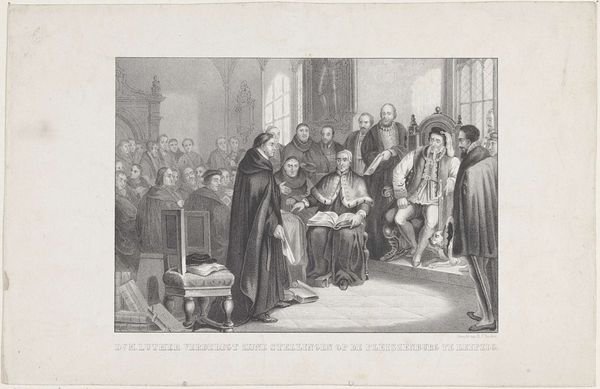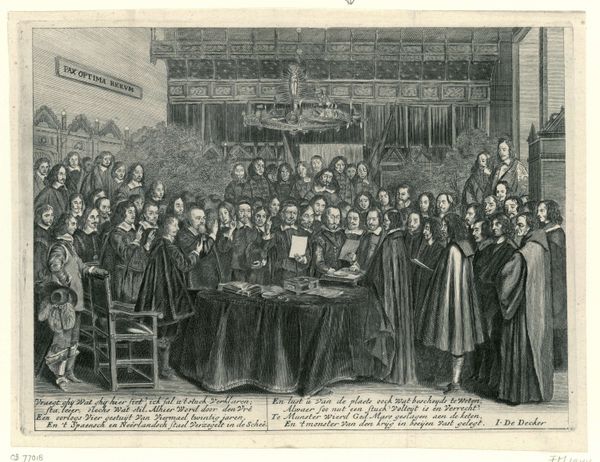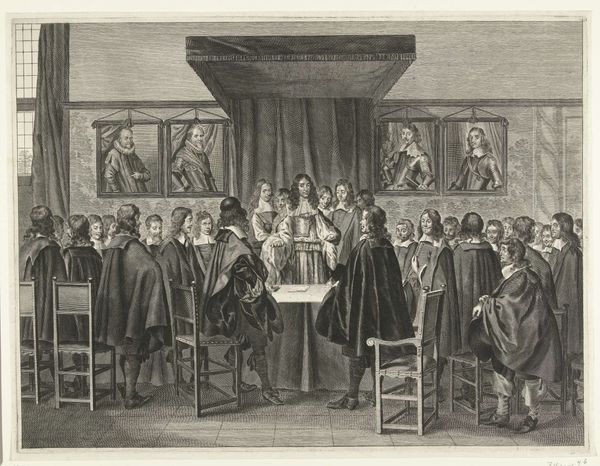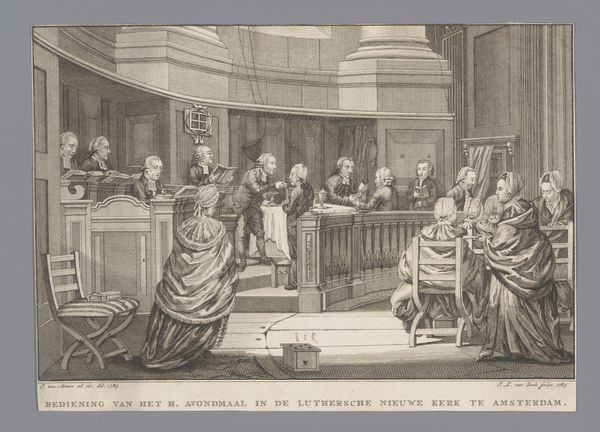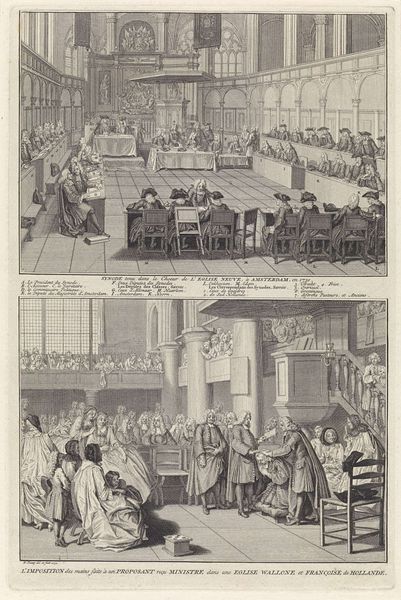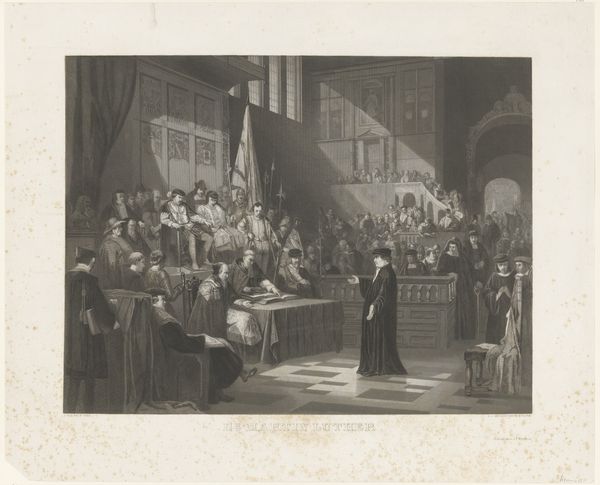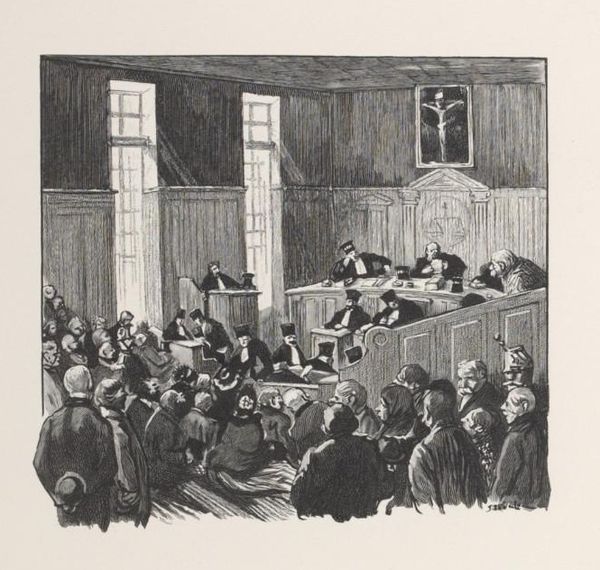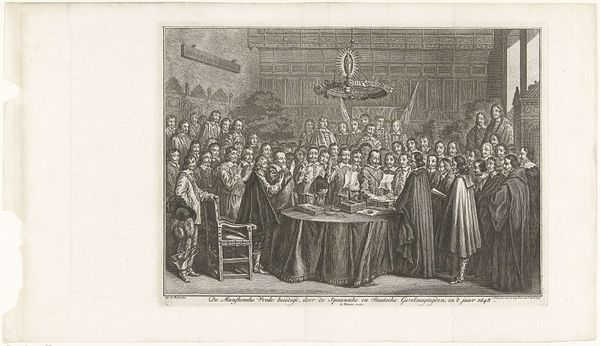
November - Law-Life Assurance from George Cruikshank's Steel Etchings to The Comic Almanacks: 1835-1853 c. 1840 - 1880
0:00
0:00
drawing, print, etching, paper
#
drawing
# print
#
etching
#
caricature
#
figuration
#
paper
#
line
#
history-painting
#
cartoon carciture
Dimensions: 95 × 153 mm (primary support); 222 × 288 mm (secondary support)
Copyright: Public Domain
Editor: This is "November - Law-Life Assurance" by George Cruikshank, likely created between 1840 and 1880. It’s a print, an etching on paper, and the scene inside a courtroom is fascinating! The people all seem to be looking in different directions, like they don't agree on something. What jumps out at you when you look at this piece? Curator: Immediately, I’m struck by how Cruikshank uses caricature to critique the legal system and its perceived association with the economic interests of the time – note "Law-life Assurance". The figures are exaggerated, and the composition pushes them all together, packed into the space. Who do you think he intended as the audience for these "Comic Almanacks?" Editor: It seems like it might be intended for general public consumption, perhaps a middle class audience? They would have some interest in what happens in court, and might be consumers of insurance? Curator: Precisely. Almanacs were hugely popular and reached a diverse readership. Cruikshank leverages this medium to expose and possibly shape public opinion on institutions such as the law, which in the Victorian era, was becoming increasingly intertwined with financial instruments like life insurance. Consider the rigid formality conveyed by the bewigged judges versus the almost panicked expressions of the audience; Cruikshank uses those visual cues to comment on the public’s understanding of legal proceedings. Does it seem welcoming? Editor: Not at all. They seem tense, maybe confused. Curator: Right, there is a disconnect between those who execute the law, and those subjected to it. And in connecting it to "assurance," he suggests the court’s business is intertwined with financial speculations rather than pure justice. The scene satirizes, but it also reflects a societal shift toward the commodification of life itself through things like insurance policies. Editor: So, he's using this caricature to make people question those power structures and their impact? Curator: Exactly. Art can be a powerful tool for social commentary, reflecting and shaping public discourse about complex social and political issues of the time. Editor: I hadn't considered it in that way initially. Now I see how a seemingly humorous image can be deeply embedded in the socio-political landscape.
Comments
No comments
Be the first to comment and join the conversation on the ultimate creative platform.
